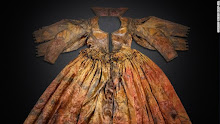Dear Bride-to-Be:
Planning a wedding is more than just organizing people, places and things! It's a life changing rite-of-passage of your deeper self, an opportunity to discover something of your inner most essence and share that with your beloved.
No wonder that through the ages, fragrance and essential oils—the extracted essence of aromatic plants—were part of a bride's wedding preparations. Using aromatherapy was a way to assist the bride to tap into her own inner essence and bring the magic of nature into the celebration! A bride would be “anointed” with fragrant, soothing essential oils—so she was then wearing the heart of a flower.
Aromatherapists tell us that the inherent beauty and harmony of nature is exemplified in essential oils. They say that using natural fragrance encourages the link between the right and left sides of the brain, connecting how we feel to how we think.
Aromatherapy consultants Joan Clark and Michael Scholes teach that this is the first step to linking the body and mind, the heart and brain, even creating a balance between the female and male energies.
“It is through these realizations,” the experts explain, “that we start to heal our hearts, learn how to communicate our innermost feelings and to express compassion and the ultimate lesson—the ability to forgive.”
Ahhh. Discovering the fragrance of the heart through essential oils.What a wonderful way to plan a wedding....a perfect way to be the bride you want to be....a loving way to begin a spiritual partnership!
Love. Listen. Let go.
...with love from Cornelia
[Photographs: Courtesy of Little Winter Bride and Drew Newman]

























